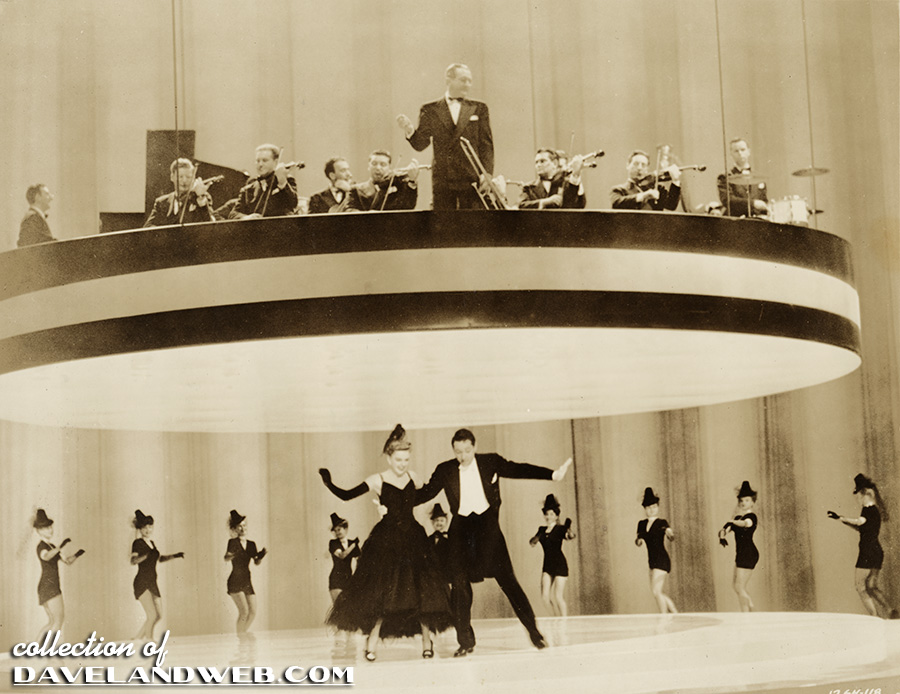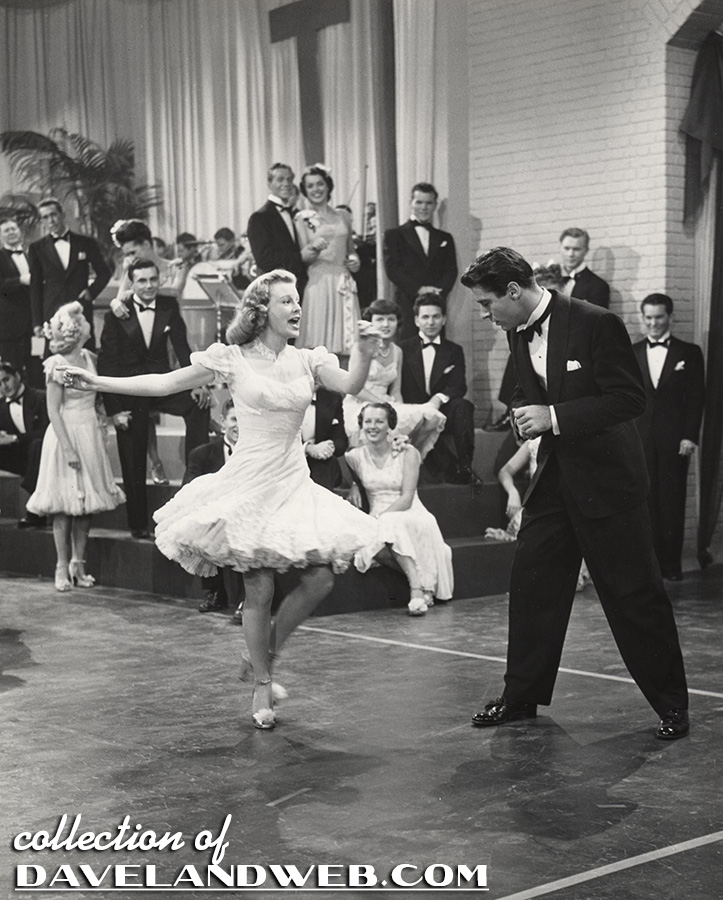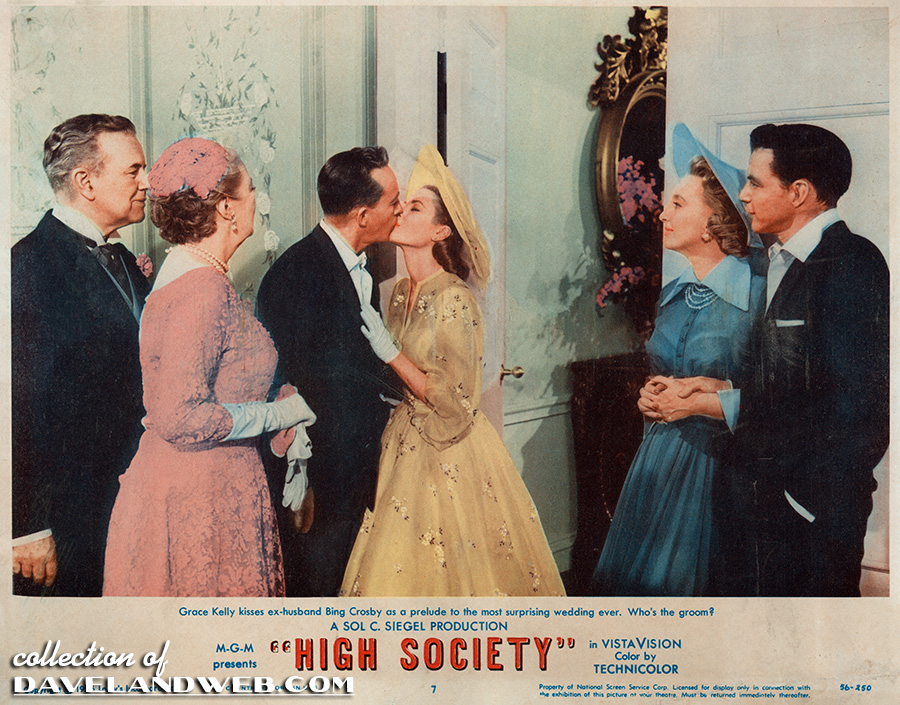
Disneyland isn’t the only thing that came out of Anaheim. Chuck Walters (born Charles Powell Walter; the “s” was added later) was a dancer, choreographer, and director during the heyday of the MGM musical. The first shot shows him dancing with Judy Garland in “Presenting Lily Mars” (1943). The original finale was an overdone patriotic mess; Walters was called in to choreograph a new musical number to show off the maturing Garland and her talents. In the Walters biography, The Director Who Made Hollywood Dance by Brent Phillips, the author tells how Walters was able to get a fearful Garland to tackle the difficult steps:
“I’m not sure I can do what you want. I can’t move like this.” With Judy, he understood that kid gloves were required. They sat down together, and in a flash of inspiration he asked, “Who is your favorite female dancer?” Without much hesitation, she replied, “Renee De Marco.” “All right,” he announced. “From now on, whenever we rehearse, you are Renee De Marco.” Garland looked at him with wide eyes and gave a sigh of relief.
Judy begged for Walters to join her again in her next picture, “Girl Crazy” (1943). For “Embraceable You,” the two twirl around the dance floor with glee. It is a beautiful sight to see. Walters danced with the polish of Fred Astaire and the approachability of Gene Kelly.

Although a fantastic dancer, producer Arthur Freed realized that Walters had a knack for directing. He had a knack for knowing how to work with actors, keep the action moving, integrating the musical numbers so that they were natural and plot driven, and most importantly of all, bring the picture in under budget! His first big assignment came with “Good News” (1947), starring June Allyson and Peter Lawford. From the accompanying publicity blurb:
VARSITY DRAG…If you’re over forty…you’ll remember it. If you”re under forty…you’ll love it! It’s the “Varsity Drag,” dance craze of the roaring twenties, when every college campus was filled with turtleneck sweaters, short-skirted flappers…and not Quonset huts and surplus jeeps. The “Drag” comes to life again in Metro-Goldwyn-Mayer’s Technicolor musical, “Good News,” starring June Allyson and Peter Lawford, with Broadway stars Patricia Marshall and Joan McCracken. “Just like an end play off left tackle!’ says June…and Peter begins to see the light.

Walters had to spend a lot of time boosting Lawford’s song and dance limitations. From Brent Phillips’ bio:
Upon seeing the finished film, Lawford’s boydhood dance teacher, Muriel O’Brien, declared: “I kept watching him and thought, Oh, my God! Anybody who could teach that boy to sing and dance in time has got to be a genius.”
Walters often directed by showing the actors how to do a scene (or number) by performing it himself.

“Good News” was such a success that Walters was handed the plumb assignment of Judy Garland and Gene Kelly in “Easter Parade” (1948). Just before filming commenced, Kelly had to be replaced by Fred Astaire due to an ankle injury.

By the time of Garland’s “Summer Stock” (1950), Walters was the only director at MGM who the brass knew could get the job done. Walters was able to elevate the basic barnyard musical story into one that is highly enjoyable and features some of the best numbers done by both Judy and Gene Kelly. “Friendly Star” is a highlight of the movie due to Garland’s performance, vocal talents, and perfect staging of this key number.

Another “J” in Walters’ portfolio was Joan Crawford. When she returned to MGM for “Torch Song” (1953), Walters was the director of choice. From the accompanying publicity blurbs:
MGM SPECIAL LAYOUT…BACK AT “HOME STUDIO”…AFTER 10 YEARS. CAMERA! ACTION!: Joan Crawford, now that the “welcome home” party is finished, goes immediately into a dance rehearsal with Charles Walters, director of her new Technicolor picture, “Torch Song,” and who is also her dancing partner in the dance sequences.
RHYTHMIC DUO… Joan Crawford and Charles Walters step a fancy rhythm in this scene from M-G-M’s drama packed Technicolor production “Torch Song.” Film co-stars Miss Crawford and Michael Wilding. In addition to portraying Miss Crawford’s dance partner, Charles Walters also directs the film and is credited with the choreography. Henry Berman produced.

Another dancer, Marc Wilder, was cast as Crawford’s partner for the scene shown above. Joan had different ideas; she wanted the best. “I’m so comfortable when I’m rehearsing with you. Would you consider doing the routine with me in the film?” Just as he had to do with Judy in “Girl Crazy,” Walters had to coax a performance out of the nervous Crawford. As Phillips tells it:
Crawford gravely whispered, “Chuck, I cannot get out of this chair.” “Honey, you’re gonna be great. The routine is down pat. We’re lit. We’re ready to go.” “I know his is a terrible thing to ask,” said Joan, “but would you be upset if I have a little vodka?” “Baby, anything that’s going to relax you is fine. Have a little slug if it’s gonna help.” “Well, you have to have one with me.” Walters later admitted it took about three drinks to shore up her confidence. “We came out of the dressing room a hair high—but relaxed and comfortable.”
One of my favorite Walters directed films was the cinematic swan song of Grace Kelly (why couldn’t her name begin with “J” for my title alliteration?), “High Society” (1956), also starring Frank Sinatra and Bing Crosby.

The duet that everyone waited for between Sinatra and Crosby was the Cole Porter chestnut “Well, Did You Evah” first introduced by Betty Grable. From Phillip’s bio:
“Towards the end of the number, I did a fairly audacious thing,” said Walters. “When they exited, I simply let the camera roll,” focused on the empty library. Then without warning, the duo burst back into their safe haven, made a beeline for the bar, tossed back one final drink and offered one final chorus. It was a unique example of a stage convention working neatly on the screen. During the film’s first sneak preview, the audience broke into spontaneous applause at what they assumed was the song’s finish. Then Frank and Bing rushed back onto the screen for another drink and another verse; by the time the pair made their arm-in-arm final exit—bellowing, “What a swellegant, elegant party this is!”—the crowd was cheering.

Not surprisingly, Crosby would later say “High Society” was his favorite film to make.
See more Classic Movie & TV photos at my main website.

No comments:
Post a Comment